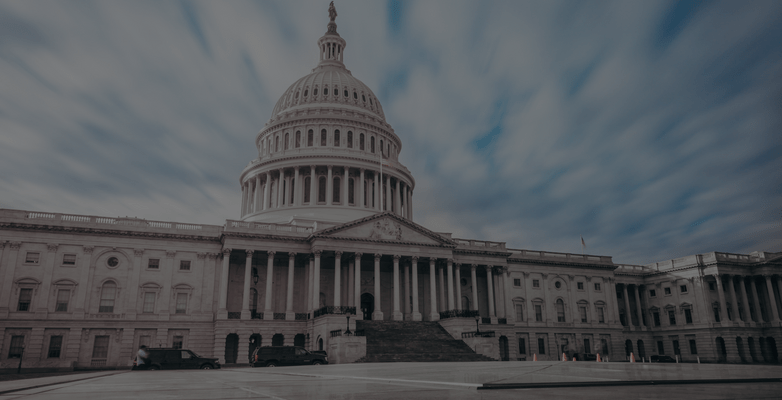
The Inflation Reduction Act Will Transform America
The Inflation Reduction Act opens the door to a better life and sustainable future for all of us.
Savor this glorious moment. Drink it in.
That wild, incredible knees-about-to-give out feeling? That's called joy. For most of us in the climate movement, it's a new one. (Or at least unfamiliar since 2015 and the signing of the Paris Agreement.)
After all, we're not used to winning. At least not big. And let's be clear, with the Inflation Reduction Act (IRA) - the boldest US climate and environmental justice bill in history - passing the Senate and clearing the last real hurdle to passage, we're winning really, really big.
Make no mistake here. The IRA has the potential to become one of the most far-reaching and pivotal pieces of legislation passed this century, if not in our lifetimes.
Most of the headlines call the IRA a climate bill. And that's true. Numerous analyses show that the bill will put the US on the path to cutting emissions roughly 40% from 2005 levels by 2030. For context, an emissions cut that big is the equivalent of taking more than 215 million gas-powered cars off the road or shuttering 268 coal-fired power plants (i.e. more than actually operate in the US) every single year.
Given that the science is 1,000% clear that the world needs to cut emissions in half by 2030 to have a shot at holding warming to something like 1.5 degrees and avoiding the worst of climate change, the world's largest economy slashing emissions by 40% with just one bill (i.e. we're not done there and more on that later) is a huge step forward for the planet.
(Given also that President Biden has promised the world we'd reduce emissions between 50–52% by the end of the decade, the world's only democratic superpower actually walking the walk is critical for the message it sends to the global community as a whole.)
But the commentary framing the IRA as somehow "just" a climate bill is getting things backwards. This isn't a climate bill that happens to have some knock-on effects across the economy. This is a bill that will transform the economy and how we live every day – and will help us stop global warming along the way.
Carrots for the Win
Approaching the problem this way is a major reason the bill can be successful where previous efforts have failed. If you watched the overheated response to the Obama Administration's Clean Power Plan in 2015 – culminating in the judicial hit job that was the Supreme Court's West Virginia vs. EPA decision this summer – or just happen to be the parent of teenagers, you know that at some level, Americans just don't like being told what to do. That is, environmental policy that relies solely on sticks typically runs into fierce resistance and all kinds of hyperbolic Don't-Tread-on-Me-ism that can doom great programs from the start.
The IRA, by contrast, is all about carrots. Among other features, the bill takes the stunning human insight that people like saving money - and judging by the consistent polling showing majority support for climate action, most also like doing the right thing by the planet - and turns it into a set of policies primed to fundamentally shift consumer behavior in ways that alter the direction of travel of the entire economy.
Another so-obvious-that-why-are-we-even-talking-about-it factor in the bill is that the price of fossil fuels swings wildly, often leading to painful energy bills for working families weaponized as talking points on Fox News. The domino effect kicked off by Russian aggression in Ukraine is clearly a factor, but volatility and reliance on petro-state dictators isn't a one-time bug of the fossil fuel system. It's baked in at the start, and if you think this is the last disruption, we have a catalogue of bridges awaiting your purchase consideration.
The price of renewable electricity, by contrast, is largely stable and predictable. After the capital costs of installing wind turbines or solar panels (and just a reminder to the cynics that pipelines and refineries don't go up for free either), you know what you're paying for your electricity because there are no ongoing fuel costs. With technology costs falling, the net result is that the cost of renewable electricity has largely been trending downward for decades, with recent projections suggesting that will continue.
The bottom line? Choosing renewables instead of fossil energy will save you money.
In a nutshell, then, the magic of the IRA is that it makes it easier for people to do the things they wanted to do anyways. As more people choose clean energy and climate-smart technologies, those technologies become cheaper, making them more affordable and starting a virtuous circle where more people can access them and on and on.
Replicated over and over on a society-wide scale, these individual choices in turn can accelerate a just transition from fossil fuels to clean, renewable energy that creates a new normal for America. One where we can live and work without destroying the planet we share.
All this, it has to be said, while creating at least 1.5 million jobs by one estimate and in particular, bringing long, long, long overdue investments and opportunities to exactly the communities so often sacrificed to fossil fuels. (With some caveats coming later.)
So What's in It for You?
How the IRA will touch your life depends in some part on how and where you live. Some of the highlights that can quickly change how people live include:
- Rebates of up to $8,000 to help low -income families replace dirty gas boilers and furnaces with energy efficient heat pumps. The rebates don't end there either, with up to $1,750 for a heat pump water heater, $840 for an electric stove, $840 for an electric clothes dryer, and thousands more for the necessary breaker and wiring. In many cases, these could cover most if not all the costs of electrifying a home.
- Moderate-income families will be eligible for rebates up to 50% of these costs as well, together helping electrify 1 million homes that can use the benefits most.
- For higher-income families, tax credits for up to $2,000 for heat pumps and heat pump water heaters and up to $1,200 to cover the cost of equipment and labor of upgrade insulation and home electrical systems.
- Tax credits to help drivers switch to clean electric vehicles, with up to $7,500 for new vehicles and $4,000 for used vehicles. The savings don't stop there either, with electric vehicle drivers projected to save $1,800 to $2,600 a year on energy and maintenance costs.
- Homeowners can also receive a credit of 30% to install solar panels through 2032, making it easier to start generating power right at home.
Transforming the Power Sector
The electric power sector is the second-largest source of US emissions. The IRA also contains numerous measures designed to take a huge chunk out of that global warming potential and speed up the energy sector's transition to clean power. Among other components, the bill provides:
- Extended tax credits for clean energy for 10 years, which will spur growth and drive down prices. Already, we've seen how smart tax credits can work as these tools already helped reduce costs for solar and wind by roughly 90% and 70%, respectively, since 2009.
- $60 billion toward domestic clean energy and vehicles manufacturing to spur clean energy growth, independence, and security, which could create hundreds of thousands of US manufacturing jobs.
Making the US a More Just Country
One of the most exciting parts of the IRA is how it harnesses the power of the federal government to ensure energy transition benefits everyone. In particular, the bill invests a staggering $60 billion in electrification, clean energy, and other health and sustainability measures in frontline communities living by power plants, ports, highways and other sources of industrial pollution.
The bill does this through a wide range of measures including:
- A $27 billion clean energy fund to speed up the deployment of low-carbon technologies, with 40% of funds dedicated to toward investments in disadvantaged communities.
- $3 billion in Environmental and Climate Justice Block Grants for community-led projects to address the individualized needs of different frontline communities.
- More than $4 billion to cut air pollution in ports, roll out zero-emission heavy-duty vehicles to replace dirty buses and garbage trucks, and improve indoor air quality in schools in low-income communities.
- $145 million to help Indigenous communities transition to clean energy.
That 40% Is Just the Beginning
Critics will note that the 40% of emissions cuts from the bill isn't 50%. There's also a glass-half-full way to look at it. Namely, that's not the whole story. There are a range of BFD executive actions President Biden can take to start closing that 10% gap.
Plus, as culture and consumer demands shift, the virtuous cycles of clean technologies getting cheaper kick in, creating yet more demand. Forward-looking businesses will see which way the wind is blowing and begin to do more on their end to close the gap. Cities and states can have (and already have had) a massive role in cutting emissions as well.
To put it another way, the IRA is the first really big step toward the kind of sustainable future we want. Once we take it, many more will follow that can get us to the 50% number and beyond.
The Big Caveat
The IRA, for all its potential, is far from perfect. To get the bill over the line in negotiations, numerous painful concessions were made to fossil fuel interests, including expedited approval for pipeline projects and new leasing opportunities for oil and gas in Alaska and the Gulf of Mexico.
Let's be clear that these are tragedies and real people, particularly those on the frontlines of the climate crisis, will suffer as a result. The point to underscore is that even as the bill passes, our fight to prevent the damage these pipelines and leases will do doesn't end. And the battlefronts are many.
As UC Santa Barbara Professor Leah Stokes - one of the architects of the bill – outlines in a must-listen conversation with David Roberts and Princeton professor and energy analyst Jesse Jenkins on the Volts podcast, the energy transition unleashed by the IRA could ultimately crush oil and gas demand, making developing these leases and pipelines deeply unprofitable and unattractive.
Further, simply awarding a lease doesn't ensure that it will be developed and exploited. There are many regulatory hurdles to overcome before a drill touches earth, and that's where we at Climate Reality will be joining communities and partners across the environmental justice movement to fight these projects every step of the way.
Which is to say, today we celebrate. But in the figurative tomorrow, the fight continues.
Getting Over the Finish Line
The bill has passed the Senate and all signs point to quick passage in the House. But at the same time, if we've learned anything after years of snatching defeat from the jaws of certain victory, we can't take anything for granted. This is a once-in-a-lifetime opportunity and it's not done until it's on the president's desk and the ink is dry.
Stand with us one last time. Let's get this done. Take action today and tell your representative to pass the Inflation Reduction Act America needs.




